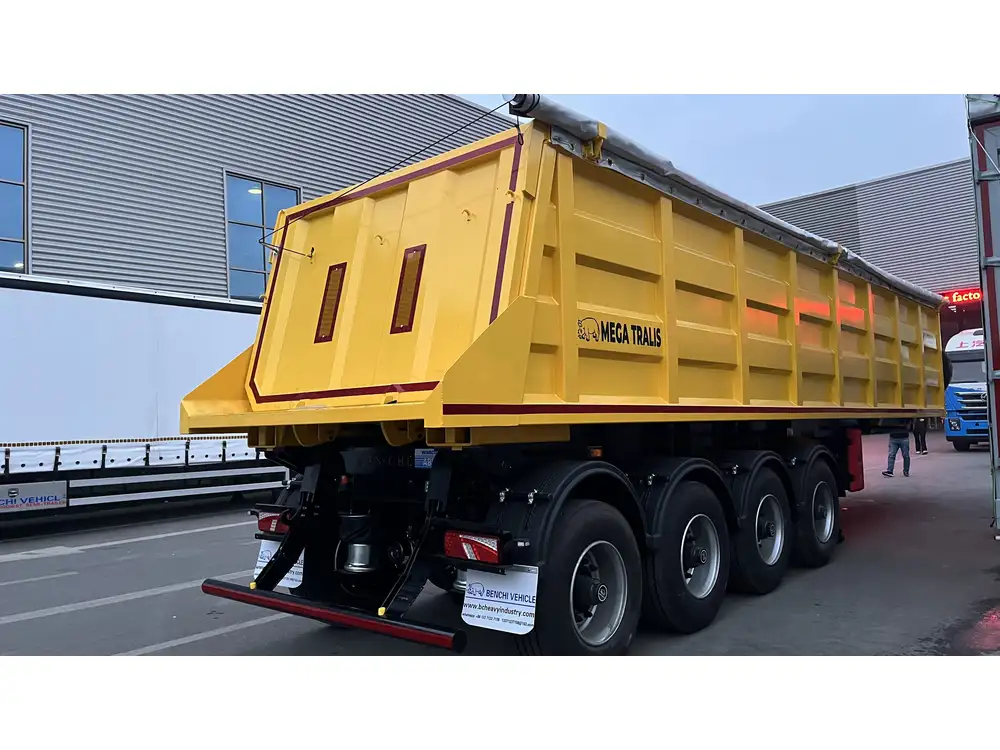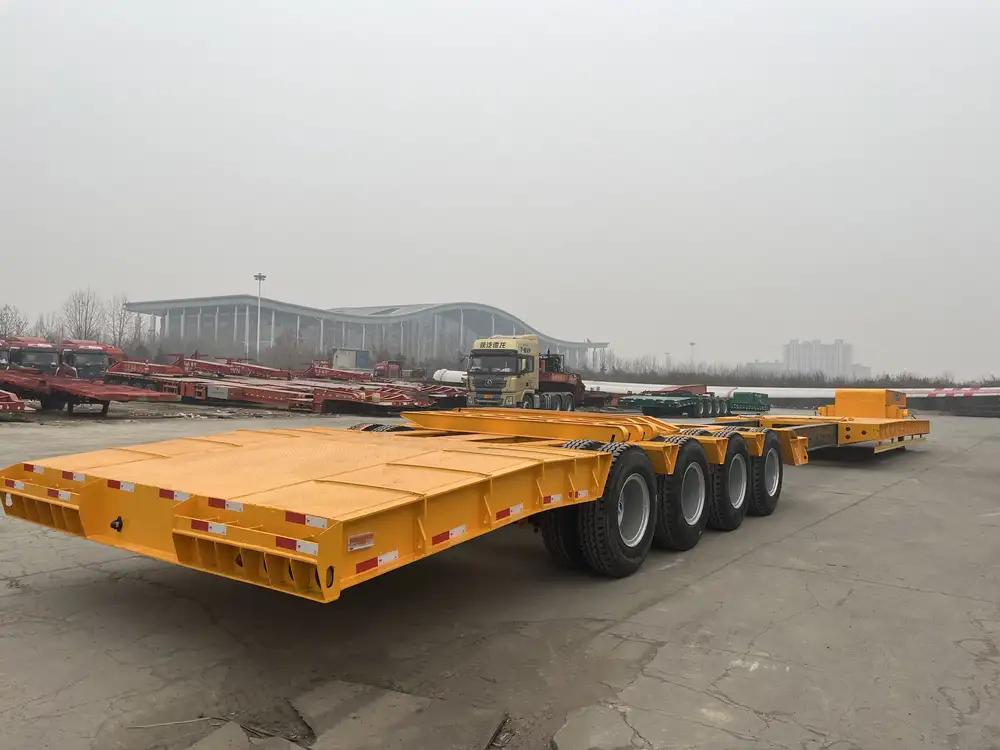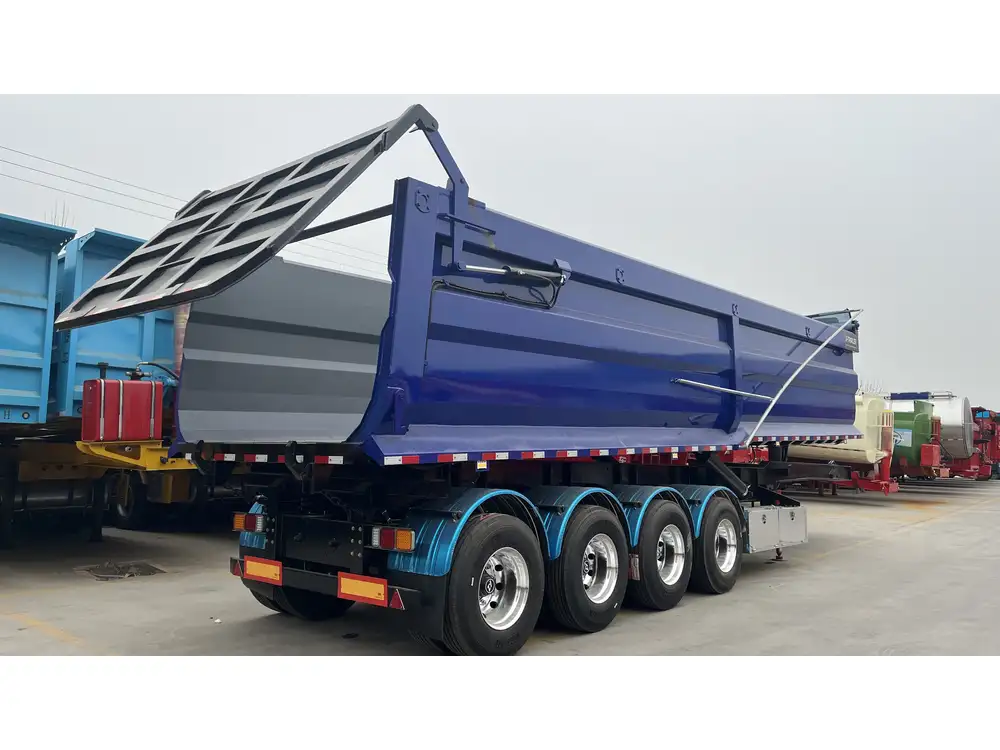When it comes to operating a semi-truck, one of the most critical components to understand is the braking system. Given the size and weight of these massive vehicles, having an intricate knowledge of how trailer brakes work is essential for effective maneuverability and safety on the road. In this guide, we will delve into the mechanics of semi-trailer brakes, explore their functionality, and address common questions and concerns.
Types of Brake Systems in Semi-Trailers
Semi-trailers can employ different types of brake systems, each with its prevalent use cases and functionalities. Let’s break down some of the main types:
1. Air Brake Systems
- Functionality: The most commonly used system in commercial heavy-duty trucks. Air brakes operate using compressed air to push pistons. When the brake pedal is pressed, the air flows from the compressor through the lines to the brake chambers, activating the brakes.
- Advantages:
- Efficient in maintaining cooling, reducing wear.
- Capable of handling heavy loads while maintaining efficacy.

2. Hydraulic Brake Systems
- Functionality: Utilized in lighter construction vehicles, hydraulic brakes use brake fluid to transfer pressure from the pedal to the brake pads. More commonly seen in commercial vehicles, they’re less prevalent in large semi-trucks.
- Advantages:
- Simpler design and smaller equipment.
3. Electric Braking Systems
- Functionality: These systems use electric signals to control brake force via electrical components. They typically supplement traditional brake systems.
- Advantages:
- Offer better response times and can be controlled through electronic stability programs.
Basic Components of a Semi-Trailer Brake System
Understanding how a trailer brake works involves familiarizing yourself with its key components:
| Component | Description |
|---|---|
| Brake Pedal | Standard operating interface for the driver. |
| Compressor | Supplies compressed air for air brake systems. |
| Brake Chambers | Convert air pressure into mechanical force to operate brakes. |
| Slack Adjusters | Automatically adjust brake shoes as they wear down. |
| Brake Shoes and Drums | Friction surfaces that slow down the wheels. |
| ABS (Anti-lock Braking System) | Prevents wheel lock-up during braking for better control. |

How Trailer Brakes Operate
Initial Engagement: When the driver presses the brake pedal, air is released from the compressor and travels through the air lines to the trailer’s brake chambers.
Activation of Brake Chambers: The air pressure forces a diaphragm inside the brake chamber to move, pushing a rod that engages the brakes.
Friction Mechanics: As the brake shoes press against the brake drums (in drum systems) or the discs (in disc systems), friction is generated, slowing the trailer’s wheels.
Release Procedure: Upon releasing the brake pedal, the air pressure is released, and any springs in the brake chamber pull the brake shoes away from the drum, allowing the wheels to turn freely again.
Why Proper Maintenance Is Crucial
Maintaining a semi-trailer brake system is critical for several reasons:
- Safety: Regular checks prevent failures that could lead to accidents.
- Efficiency: Well-maintained brakes improve fuel efficiency by ensuring less drag.
- Longevity: Preventative maintenance extends the lifespan of components, reducing replacement costs.
Maintenance Checklist
To ensure optimal functionality, adhere to this simple maintenance checklist:
- Inspect Brake Pads and Shoes: Look for wear indicators.
- Check Air Pressure Levels: Ensure appropriate pressure settings are maintained.
- Review Brake Fluid Levels: For hydraulic systems, monitor and refill as necessary.
- Evaluate Pneumatic Lines: Look for leaks or signs of wear.
- Test Brake Functionality: Regularly perform function tests on the trailer’s braking system.

Common Issues and Troubleshooting
Despite the robust engineering behind semi-trailer brake systems, several issues may arise requiring immediate attention:
1. Brake Fade
- Symptoms: Inability to stop effectively.
- Causes: Overheating from continuous use, leading to a decrease in brake effectiveness.
- Solution: Allow brakes to cool down and assess wear levels. Replace pads if necessary.
2. Uneven Wear
- Symptoms: One side of the brake system shows more wear than the other.
- Causes: Misalignment or issues with the slack adjusters.
- Solution: Adjust the slack adjusters, and check alignment at regular intervals.

3. Loss of Air Pressure
- Symptoms: Warning lights may indicate low air pressure.
- Causes: Air leaks or a failed compressor.
- Solution: Locate leaks, check connections, and repair or replace faulty components.
4. Electrical Issues
- Symptoms: Inoperative electric brakes.
- Causes: Faulty wiring or a blown fuse.
- Solution: Inspect circuits and replace any damaged components.
The Importance of Weight Distribution
Weight plays a pivotal role in the overall effectiveness of a semi-trailer brake system. Inadequate weight distribution can lead to:
- Overloading: Creates excessive strain on the brakes, leading to premature wear and potential failure.
- Uneven Stopping: A poorly loaded trailer can result in one side braking harder than the other, leading to instability.

Tips for Weight Management
- Load Evenly: Distribute cargo uniformly across the axles.
- Monitor Weights: Use scales to ensure compliance with legal weight limits.
- Secure Cargo: Properly fastening all loads can prevent shifting while in transit.
Conclusion: Prioritizing Brake System Knowledge for Safety
Understanding how a trailer brake works on a semi truck is not just beneficial; it’s imperative for anyone in the transportation industry. The ramifications of brake system failures extend beyond mere inconvenience – they can be catastrophic.
By familiarizing yourself with the components, maintenance practices, and common issues associated with semi-trailer brakes, you can enhance operational safety, increase your load management efficiency, and ultimately ensure a smooth and responsible driving experience.
Take Action!
- Schedule Regular Inspections: Make it a point to have your brake systems checked regularly.
- Educate Your Drivers: Ensure that everyone involved in operating the vehicles understands the importance of brake function.
- Invest in Quality Equipment: Use high-quality trailer parts to ensure longevity and safety on the road.
By placing a continual focus on brake system functionality, we can create a safer environment for all road users.



